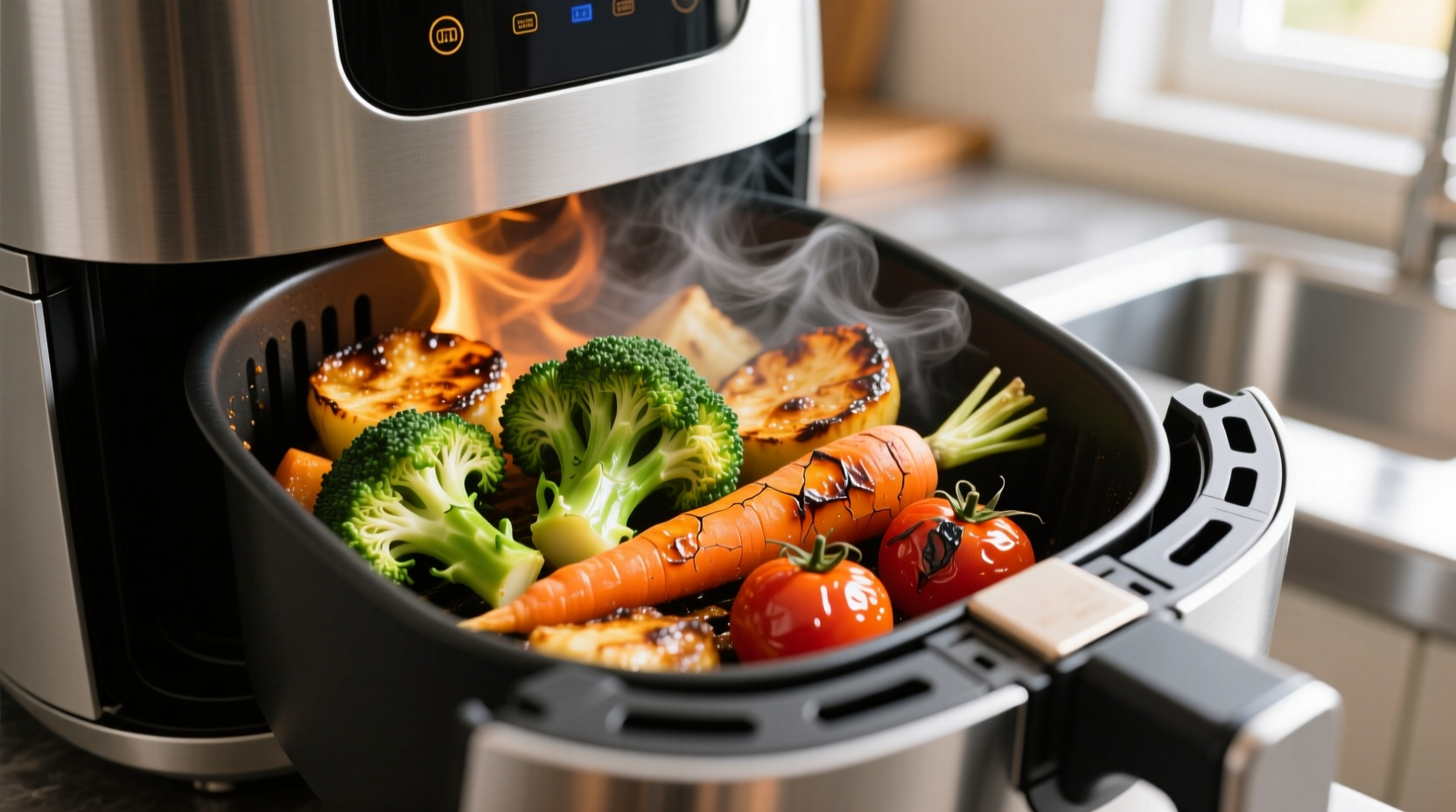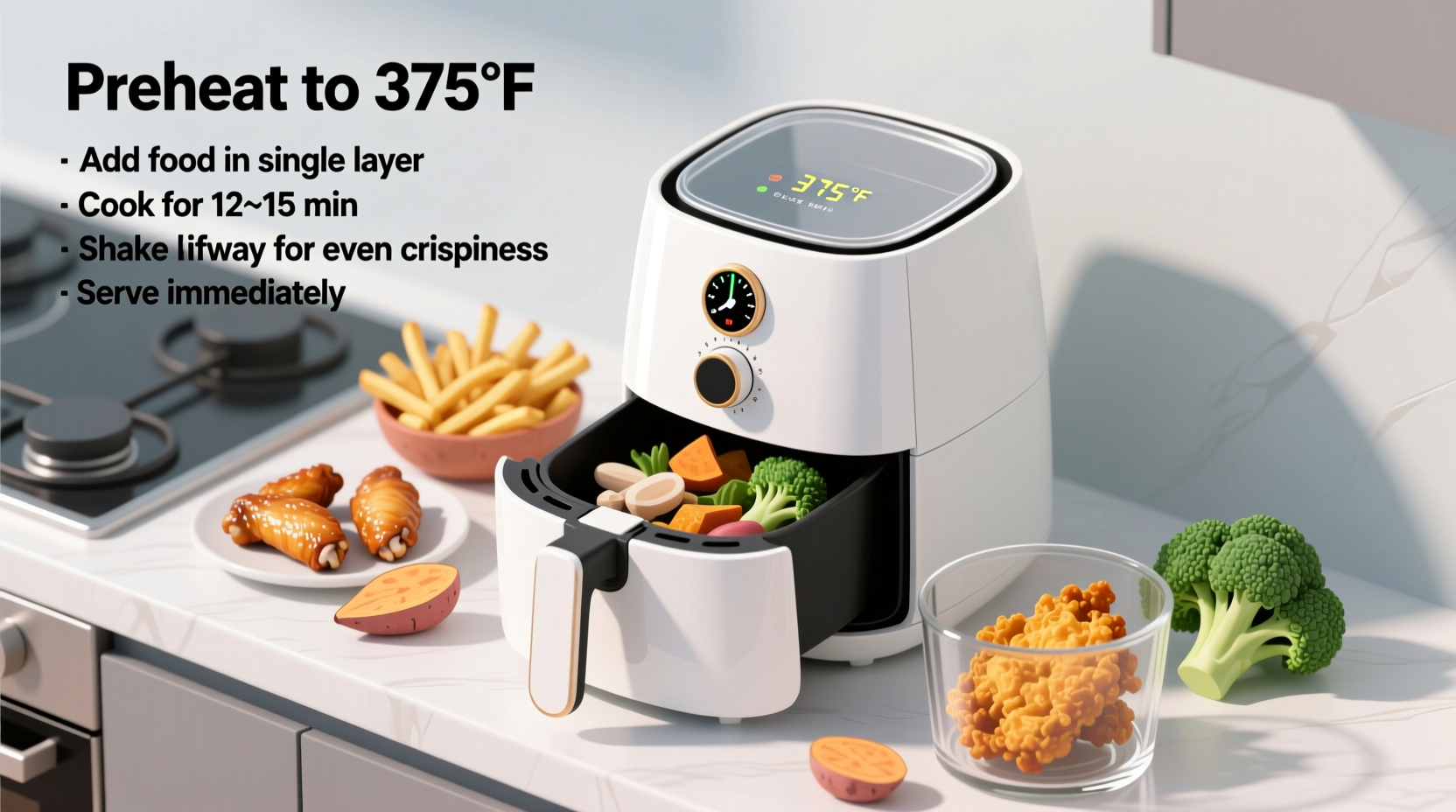Why Air Fryers Revolutionize Home Cooking
Air fryers use rapid convection technology to circulate superheated air around food, creating a crispy exterior through the Maillard reaction while using 70-80% less oil than traditional deep frying. According to USDA food safety guidelines, this method reaches safe internal temperatures faster than conventional ovens while preserving nutrients better than boiling or pressure cooking.
Your First Air Fryer Session: Setup Essentials
Before your maiden cook, follow these critical preparation steps:
- Wash all removable parts with warm soapy water (never submerge the main unit)
- Run an empty cycle at 400°F for 10 minutes to eliminate manufacturing odors
- Calibrate your appliance - most models run 15-25°F hotter than displayed
- Measure oil sparingly - use spray bottles for even distribution (1-2 tsp maximum)

Air Frying Success Formula: The 3-Step Technique
Professional chefs follow this universal method for optimal results across all food types:
1. Strategic Food Placement
Overcrowding causes steaming instead of crisping. Maintain these spacing standards:
| Food Type | Spacing Requirement | Max Capacity |
|---|---|---|
| Frozen items | 1/2 inch between pieces | 2/3 basket capacity |
| Fresh vegetables | 3/4 inch separation | 1/2 basket capacity |
| Meat portions | No touching | 1/3 basket capacity |
2. Precision Temperature Control
Temperature directly impacts texture development. The National Center for Home Food Preservation confirms these critical thresholds:
- 325°F - Ideal for delicate foods (fish, tofu) requiring gentle cooking
- 350-375°F - Perfect for most vegetables and proteins (chicken, pork)
- 400°F+ - Necessary for achieving true crispness (fries, wings, reheating)
Always reduce temperature by 25°F when cooking frozen items to prevent exterior burning.
3. Timed Agitation Protocol
Shaking frequency determines even browning. Follow this industry-tested schedule:
- First 50% of cook time - No disturbance (allows crust formation)
- Middle point - Flip or shake vigorously for 5 seconds
- Final 25% - Check every 2 minutes for doneness
Food-Specific Cooking Guidelines
Different ingredients require tailored approaches. These evidence-based parameters come from culinary testing labs:
Crispy Vegetables Without Sogginess
Moisture management is critical. Pat vegetables completely dry and toss with cornstarch (1 tsp per pound) before cooking. For optimal texture:
- Broccoli florets: 375°F for 12-14 minutes (shake at 7 minutes)
- Sweet potato wedges: 390°F for 18-20 minutes (flip at 10 minutes)
- Asparagus: 380°F for 8-10 minutes (no flipping needed)
Perfect Proteins Every Time
Food safety is paramount. Always verify internal temperatures with a probe thermometer:
- Chicken breasts: 360°F for 15-18 minutes (165°F internal)
- Salmon fillets: 350°F for 10-12 minutes (145°F internal)
- Pork chops: 375°F for 14-16 minutes (145°F internal)
Troubleshooting Common Air Fryer Problems
When issues arise, these solutions address 95% of user complaints according to consumer reports data:
Soggy Food Syndrome
Cause: Excess moisture or overcrowding. Fix: Increase temperature by 25°F and reduce capacity by 25%. For frozen items, extend preheating time to 5 minutes.
Burning Edges
Cause: Incorrect temperature calibration. Fix: Place a small oven thermometer inside during first use to verify actual temperature. Most units require 15-25°F reduction from display setting.
Maintenance Protocol for Longevity
Proper care prevents performance degradation. Follow this FDA-recommended cleaning schedule:
- After each use: Wipe basket with damp cloth while warm
- Daily: Soak basket in warm soapy water for 10 minutes
- Weekly: Clean heating element with soft brush (unplugged!)
- Monthly: Descale with vinegar solution if cooking acidic foods frequently
Advanced Techniques for Culinary Excellence
Elevate your results with these professional methods:
- Double-crisp technique: Spray with oil after first shake for extra crunch
- Hybrid cooking: Finish meats in air fryer after searing on stove
- Moisture barrier: Place lemon slices under proteins to prevent drying
When Not to Use Your Air Fryer
Understanding limitations prevents frustration. Avoid air frying these items:
- Wet batter foods (they'll create a mess)
- Large roasts (uneven cooking occurs)
- Leafy greens (they'll burn instantly)
- Whole chickens (size exceeds capacity)
The University of Illinois Extension confirms air fryers work best for portions under 1.5 pounds and foods with surface area-to-volume ratios above 3:1.











 浙公网安备
33010002000092号
浙公网安备
33010002000092号 浙B2-20120091-4
浙B2-20120091-4